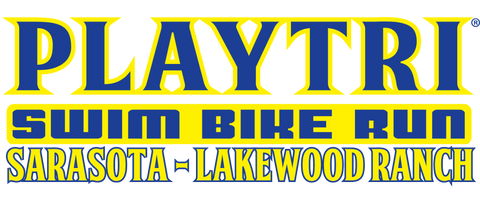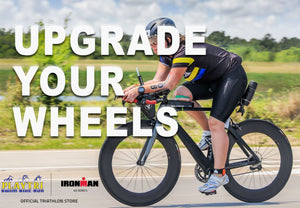
COACH JIM'S TRI TIPS: IMPROVING YOUR SHORT COURSE RACING
It seems inevitable that when you tell someone you are doing a triathlon they ask about Kona. “Oh, are you doing the one in Hawaii?” It’s the race that put triathlon on the map for most people. However, don’t let their misunderstandings about the sport get you down. Short course racing is not just a steppingstone to the “real thing.” Short course racing is fast, intense, and hard - something we frequently encourage for our Playtri athletes to improve skill and execution. Here are four tips to help you improve your short course racing this season.
Practice your transitions.
Short course racing is fast from the get go. If you put all your training focus into swim, bike, and run and don’t practice your transitions then you are losing out on free speed. Depending on the size and strength of the age group, a slow transition can mean the difference between a podium spot or middle of the pack. Develop a routine for transitions and then practice practice practice until you can transition from swim to bike and bike to run smoothly, efficiently, and as fast as you are able. The goal for age group athletes in T1 is less than 10 seconds at the rack. 15 seconds at rack is a good goal for T2.
At Playtri we even offer private lessons for transition skill development.
Your easy days should be really easy.
Even though short course racing is fast, it is important to remember that short course triathlon is still an endurance sport. Newer triathletes (and even veterans trying to get faster) often neglect this aspect of training. Easy days are opportunities to work on form, cadence, developing fat efficiency, and active recovery while building a strong aerobic foundation. Here are some of my favorite easy day workouts to use with my Playtri athletes:
Swim: 15 minutes warm up. 15 minutes as 25 drill / 25 swim with 15 seconds rest. 15 minutes pull with snorkel, buoy, and paddles. 15 minutes easy swim with snorkel. Focusing on good form the whole time.
Bike: 2 hours at Below Training Pace or lower half of Training Pace heart rate. Keep cadence at 80-95 rpm. Practice getting in and out of your shoes while they are still clipped in if you need to improve that transition skill.
Run: 1 hour run with walk breaks. Warm up for 5-10 minutes gradually moving from a walk to a run. Run 4 minutes keeping HR in lower half of Training Pace and cadence above 170-175 steps per minute, walk 1 minute. Repeat 9 times. Walk 5 minutes for cool down.
And your hard days should be really hard.
The flip side to your easy days is including really hard intervals in your training with really easy recovery between the intervals. Far too often endurance athletes end up in the in-between space where easy is too hard and hard is too easy because we haven’t recovered fully from the last interval. Here are some of my favorite intervals for short course racing.
Swim: 200 repeats at race pace with 20 seconds rest. AND 50s (Odds 25 really fast / 25 really easy and Evens 25 really easy / 25 really fast) with 15-20 seconds rest
Bike: After a thorough 15 minute warm up, do 1.5 minutes Below Training Pace heart rate, then 30 seconds at 100-150 watts above your Vo2 power. Repeat for a total of 30 minutes. End with 15 minutes of spinning the legs at 90-100 rpms with your heart rate Below Training Pace.
Run: Warm up for 10-15 minutes. Then do repeats of 3 minutes really easy jog (or walk) followed by 2 minutes at 1 mile pace. Repeat for a total of 40-45 minutes. Walk for 5-10 minutes to cool down.
Work on the mental game.
Since short course racing takes less time, it is easy to think that the mental aspect of racing is not as important. However, with the intensity and speed so high the mental aspect is even more important. During your easy training sessions and in the weeks leading up to your race, spend 5-10 minutes each day visualizing what a good race day will look like for you. Visualize how a good day will unfold from the moment you get up until you cross the finish line. Then visualize how you will calmly and quickly handle any race day mishaps: a flat tire, leaky goggles, dropped nutrition.
Again, don’t let anyone (including yourself) dismiss short course racing as something lesser than long course racing. Short course racing is hard, intense, and fast. Check out upcoming races with Playtri, and talk to your coach about working some fun, fast local races into your training schedule!
Jim Rowe is a Playtri Level 4 Coach, a USAT LI Certified Coach, and NASM Certified Personal Trainer who works with adult athletes of all abilities from beginners to IRONMAN World Championship qualifiers. Learn more about Jim at www.playtri.com/jim-rowe.



Leave a comment